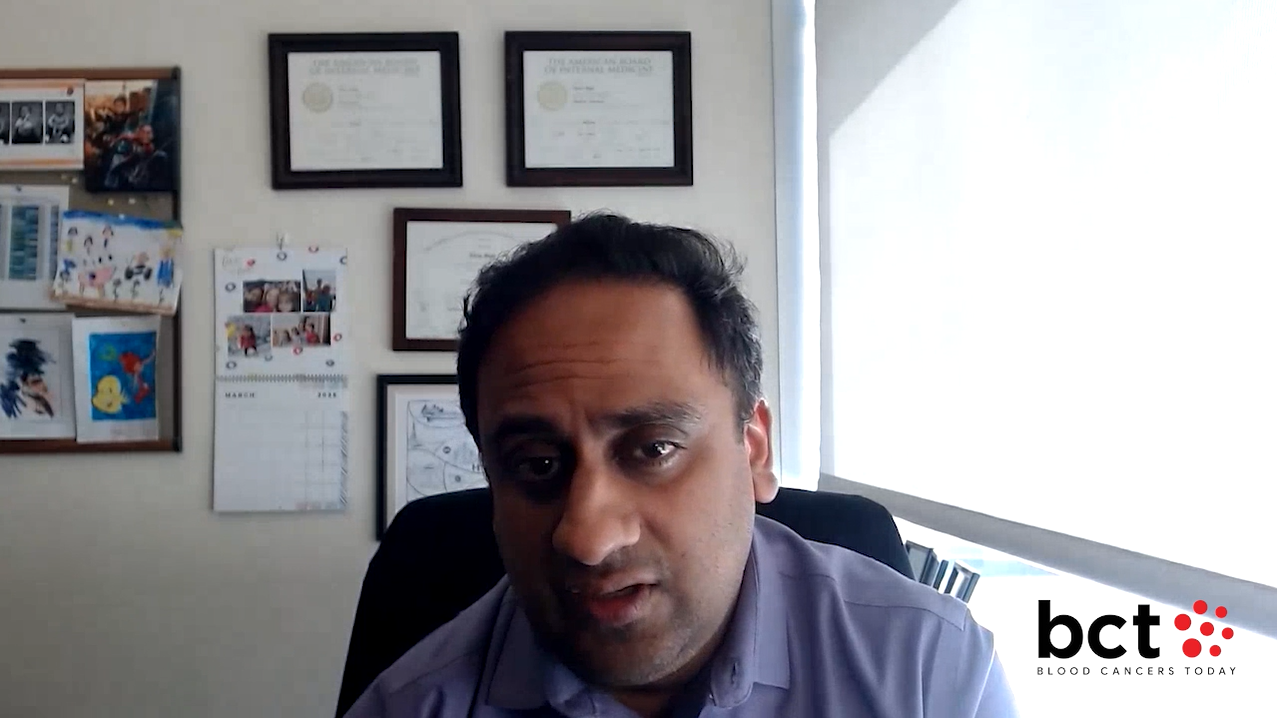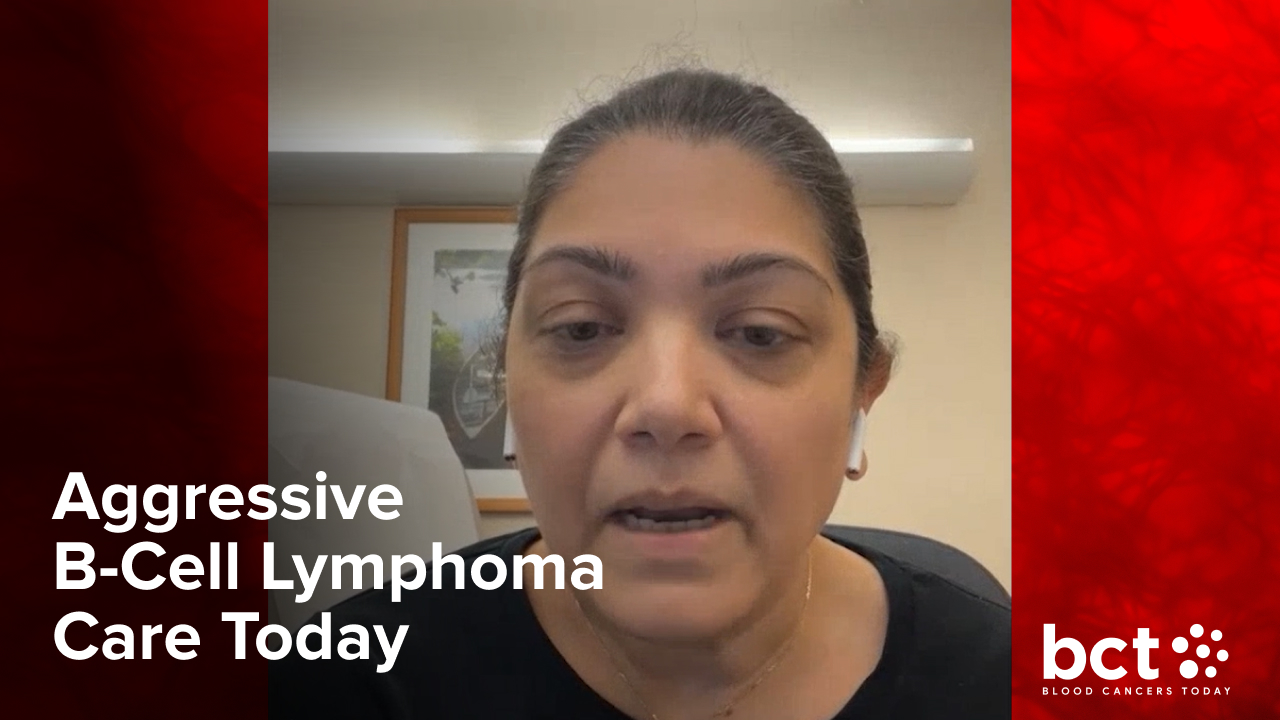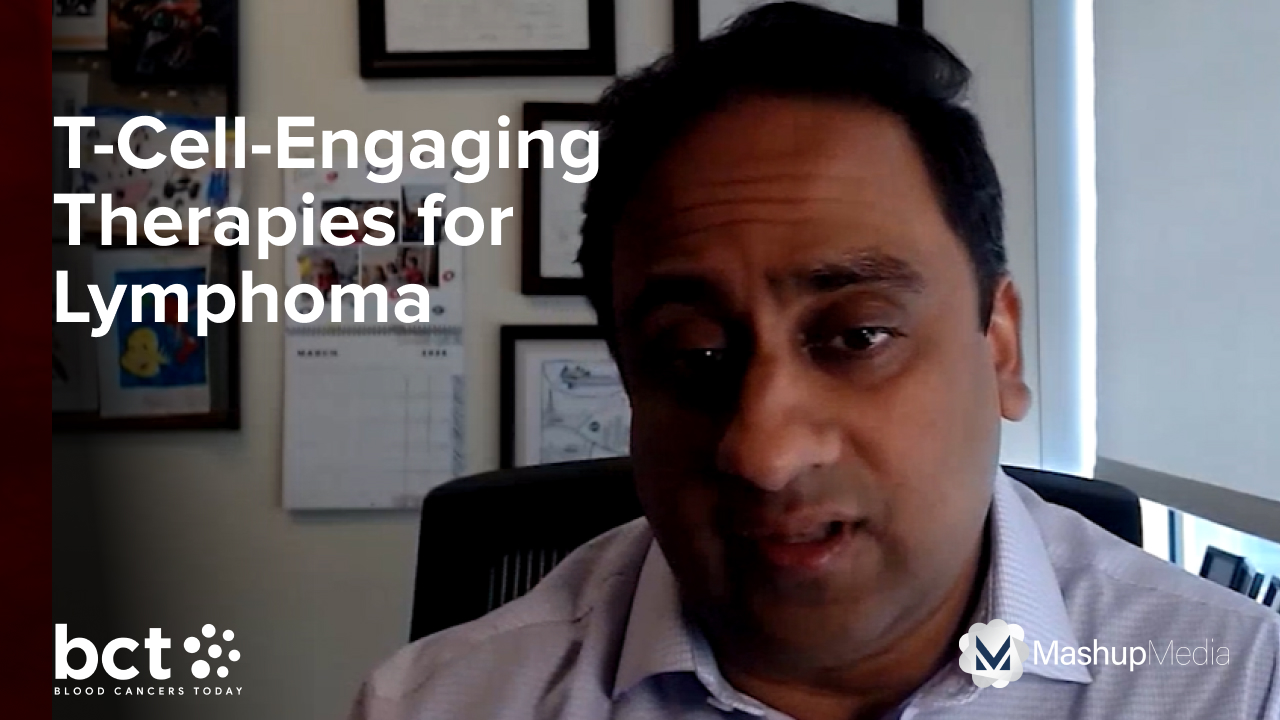Real-World CAR-T Outcomes, Use of Ide-Cel, Cilta-Cel for Myeloma
By Saad Z. Usmani, MD, MBA, FACP, Shambavi Richard, MD, Meera Mohan, MD, Yi Lin, MD - Last Updated: March 15, 2024A roundtable discussion, moderated by Saad Usmani, MD, of Memorial Sloan Kettering Cancer Center, focused on treatment considerations for relapsed or refractory multiple myeloma, including updated data from the 2023 American Society of Clinical Oncology (ASCO) Annual Meeting. Dr. Usmani was joined by a panel that included Yi Lin, MD; Shambavi Richard, MD; and Meera Mohan, MD.
In the next segment of the roundtable series, the panel discusses the real-world data and first-hand experiences with the two US Food and Drug Administration (FDA)-approved chimeric antigen receptor (CAR) T-cell therapies for myeloma: idecabtagene vicleucel (ide-cel) and ciltacabtagene autoleucel (cilta-cel).
Watch the next segment in this roundtable series.
—
Dr. Usmani: We now have real-world data with ide-cel that was actually presented and subsequently published at ASH, and now at ASCO we have the cilta-cel real-world experience. Dr. Lin, what are the similarities and contrasts with both those experiences?
Dr. Lin: It’s very exciting that we’re seeing here at ASCO for the first time, real-world data from cilta-cel, and of course recognizing challenges all centers have had in terms of getting the patients on, so knowing these are somehow a very sub-selected group of patients. But we all know the patients that were on the waiting list, oftentimes they were on because they couldn’t get on a clinical trial; they did qualify for a number of reasons.
It wasn’t surprising to see in the cilta-cel population, similar to ide-cel, that a very high percent of those patients who received cilta-cel in the real world also would not have met CARTITUDE-1 criteria. It was actually reassuring to see that the out-of-spec rate in the real world was 19%, which is right on par with 18% on the label.
Recognizing that the decision on the commercial specification for the CAR-T is an FDA decision that sets a threshold. Even in CARTITUDE-1, even though we know from the trial conduct manufacturing was successful, but if we applied a commercial specification, the out-of-spec rate was 18%.
In the real world, despite a very high percent of patients having demographic features that didn’t meet criteria, the manufacturing, the characteristics, if you think about it, of the product, were actually very similar to what was used in the CARTITUDE-1. Of course, we need longer follow-up to know, do those products really perform differently or similarly than the in-spec product? There is an [expanded access protocol] study that has finished accrual, so we’ll see the data in the future.
Of the real-world dataset, it was very encouraging to see similar to the ide-cel experience, despite these patients having various features of disease characteristics and demographic characteristics that didn’t meet the study criteria, that the overall safety signal seems very comparable in terms of cytokine release syndrome [and] neurotoxicities. We still do see that, unfortunately, but they were not excessively higher than what was seen before. The follow-up is still quite short. We know with CAR-T therapy and myeloma, the response can take time to deepen. I don’t think we’ve necessarily seen that the highest best response rate yet, but the overall response rate was quite high and very encouraging.
I think we’ll continue to follow this patient population to see in terms of durable progression-free survival (PFS), how did that look in the real world? Which we know with CARTITUDE-1, that’s what was really exciting; it wasn’t just the high percent of deep response rates, but the very long PFS that we are seeing with a one-time dosing of the CAR-T.
Dr. Usmani: I love how you segued into that, because you’re going to be talking about that data at this meeting as well. Tell us a little bit more about it.
Dr. Lin: It’s very exciting. We’ve seen the primary analysis on CARTITUDE-1 and at that time of follow-up, the median PFS [was] not met. Then we’ve seen last year’s longer follow-up, with a median of not quite two and a half years, a median PFS still not met. This year we finally have three-year follow-up. Now we see that the median PFS is just a little bit short of three years—35 months for all patients. But patients who achieved stringent CR, [were] higher than that—38 months. Patients who had sustained MRD [measurable residual disease] negativity at six months, 12 months, the median PFS has not been met yet and median OS [was] also not met. Very, very exciting data.
Dr. Usmani: I think we are seeing consistency with other CARTITUDE-2 cohorts as well. The CARTITUDE-4 data, I’m really looking forward to hearing Binod Dhakal, MD, share a lot of details with us. What has your experience been in getting the product back, whether for ide-cel or cilta-cel? Is it the same compared to what was reported in clinical trials or what has been your experience in the commercial product? Meera, we can start with you.
Dr. Mohan: The clinical efficacy is pretty comparable to what has been shown in the KarMMa study with ide-cel. With cilta-cel too, so far, the few patients that we have done the commercial CAR, I think the responses are what is expected.
Dr. Usmani: Then with both the trials it would take roughly a little over four weeks for us to get the product back after apheresis. Are you seeing the same thing or there are delays?
Dr. Mohan: I think at least at our institution, we do have delays with both ide-cel and cilta-cel and obviously with cilta-cel we’ve had a lot of out-of-spec issues and delays.
Dr. Lin: Yeah, that’s been our experience as well. As you know, one of the challenges could be all that coordination and scheduling. At our center, I would say quite a high percent of our patients don’t live locally. We’re in a very rural part of the country, and so we’ve just systematically said “Everybody plan to come back after two months,” instead of trying to time it on anticipated return, now there’s a delay, and the patient has to reschedule everything, we have to reschedule everything.
If we do two months, it’s kind of easy. That’s two cycles of whatever bridging therapy and just plan on that. As long as they’re clinically stable, if the product comes back a little bit early, that’s great, but we are not going to reschedule everything. A little bit like transplant, how we plan for transplant. But if there’s some delay, then hopefully there [are] less people that we need to contact to reschedule, because yes, unfortunately that still is an issue.
Dr. Usmani: Consistency of getting the product back, vein-to-vein time is something that we recognize as an issue.






 © 2025 Mashup Media, LLC, a Formedics Property. All Rights Reserved.
© 2025 Mashup Media, LLC, a Formedics Property. All Rights Reserved.